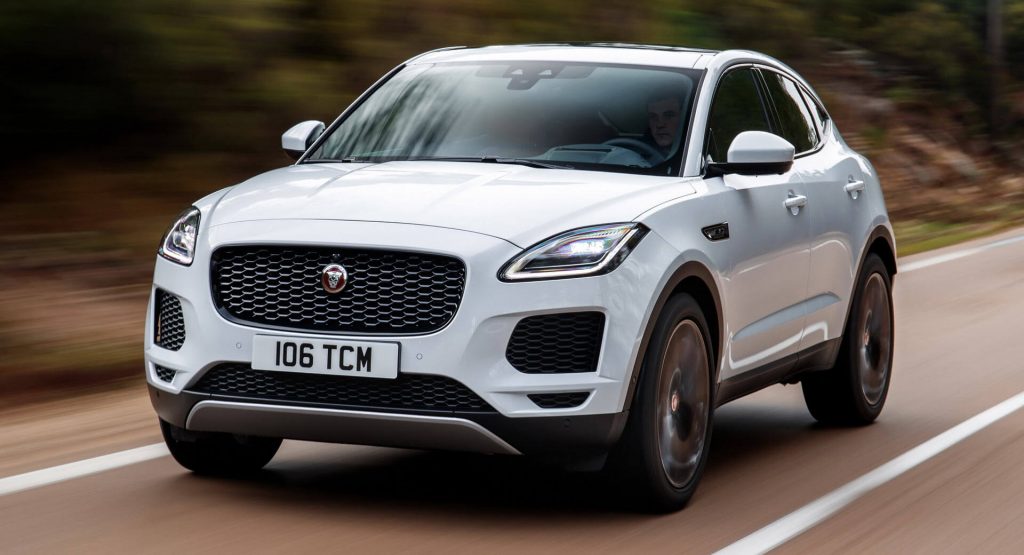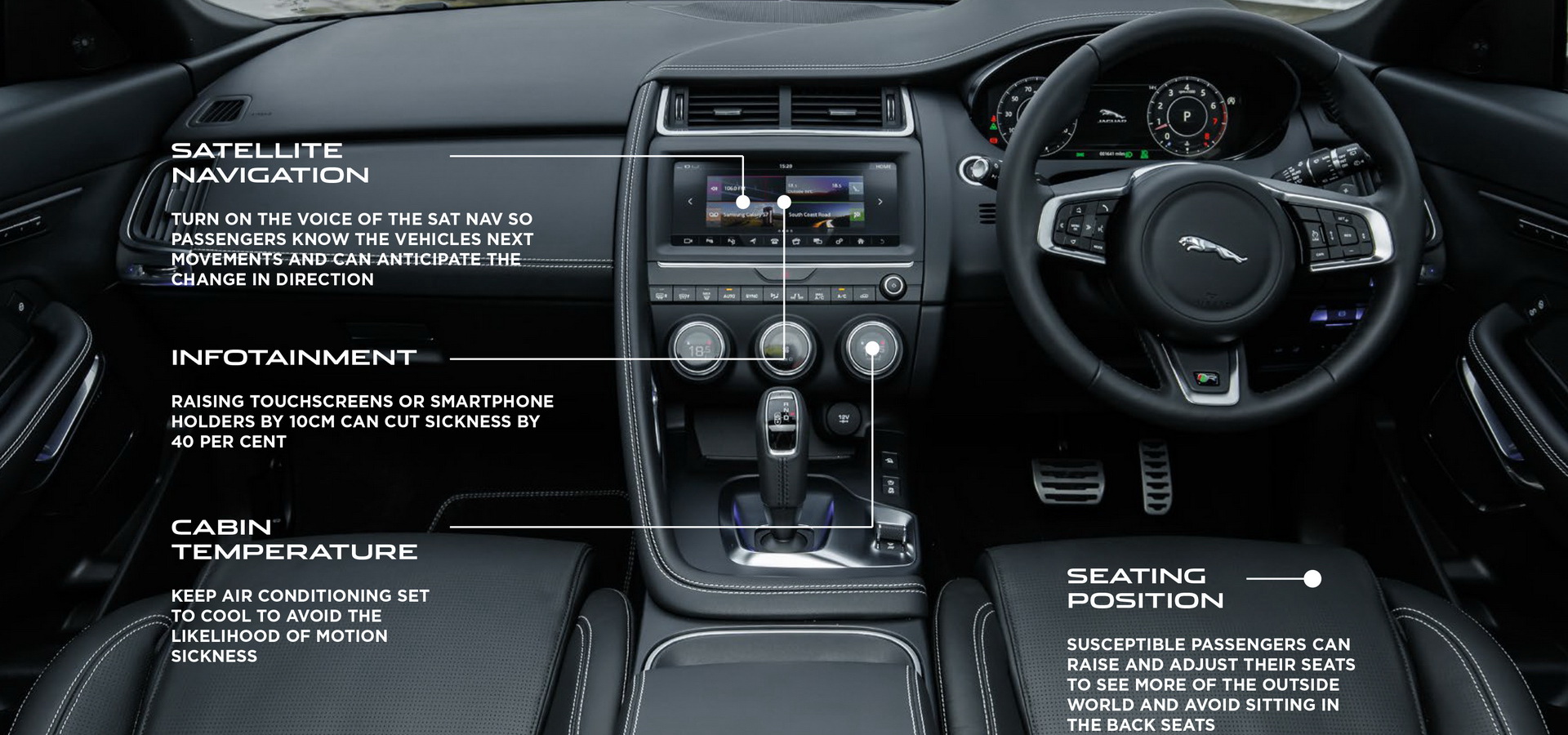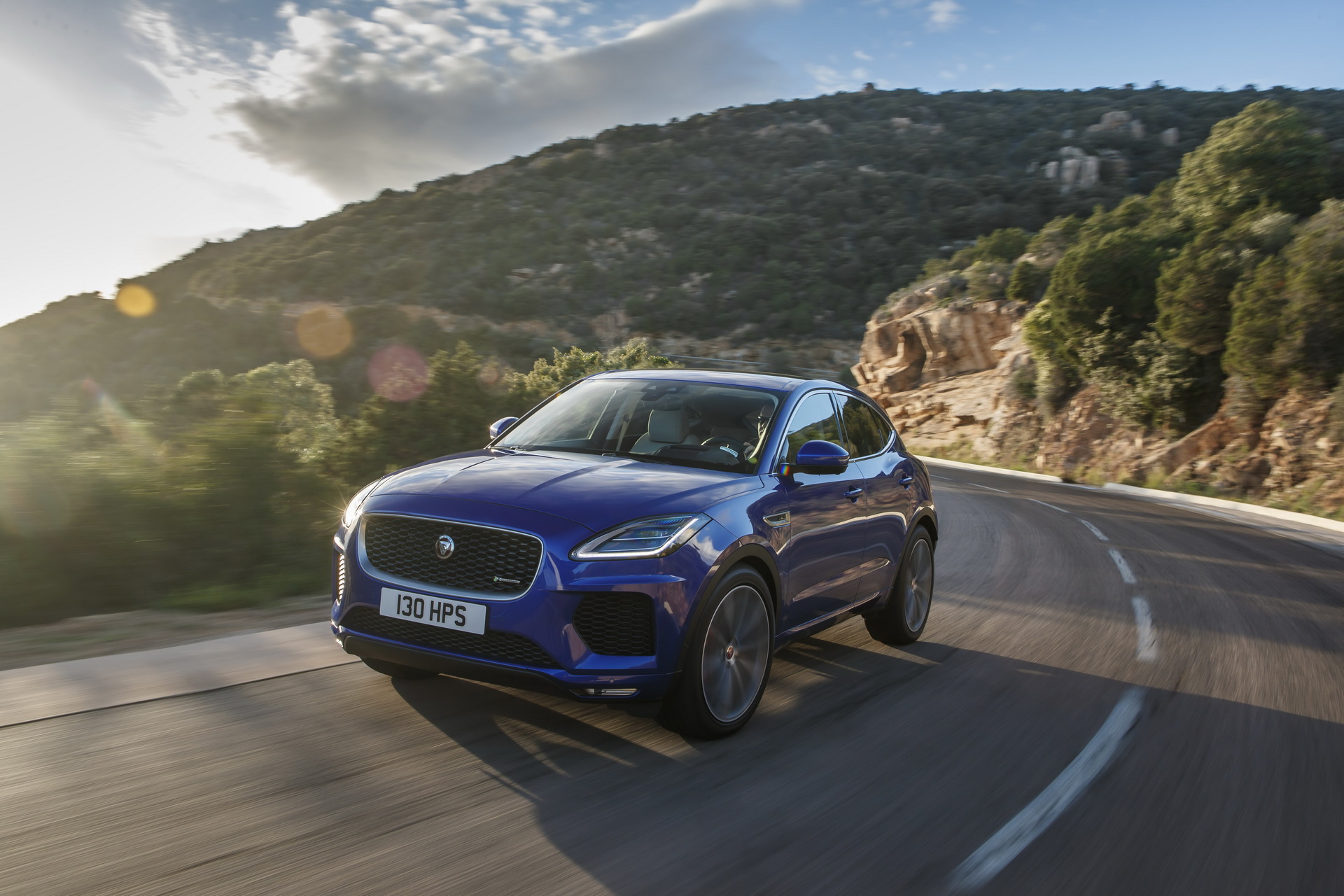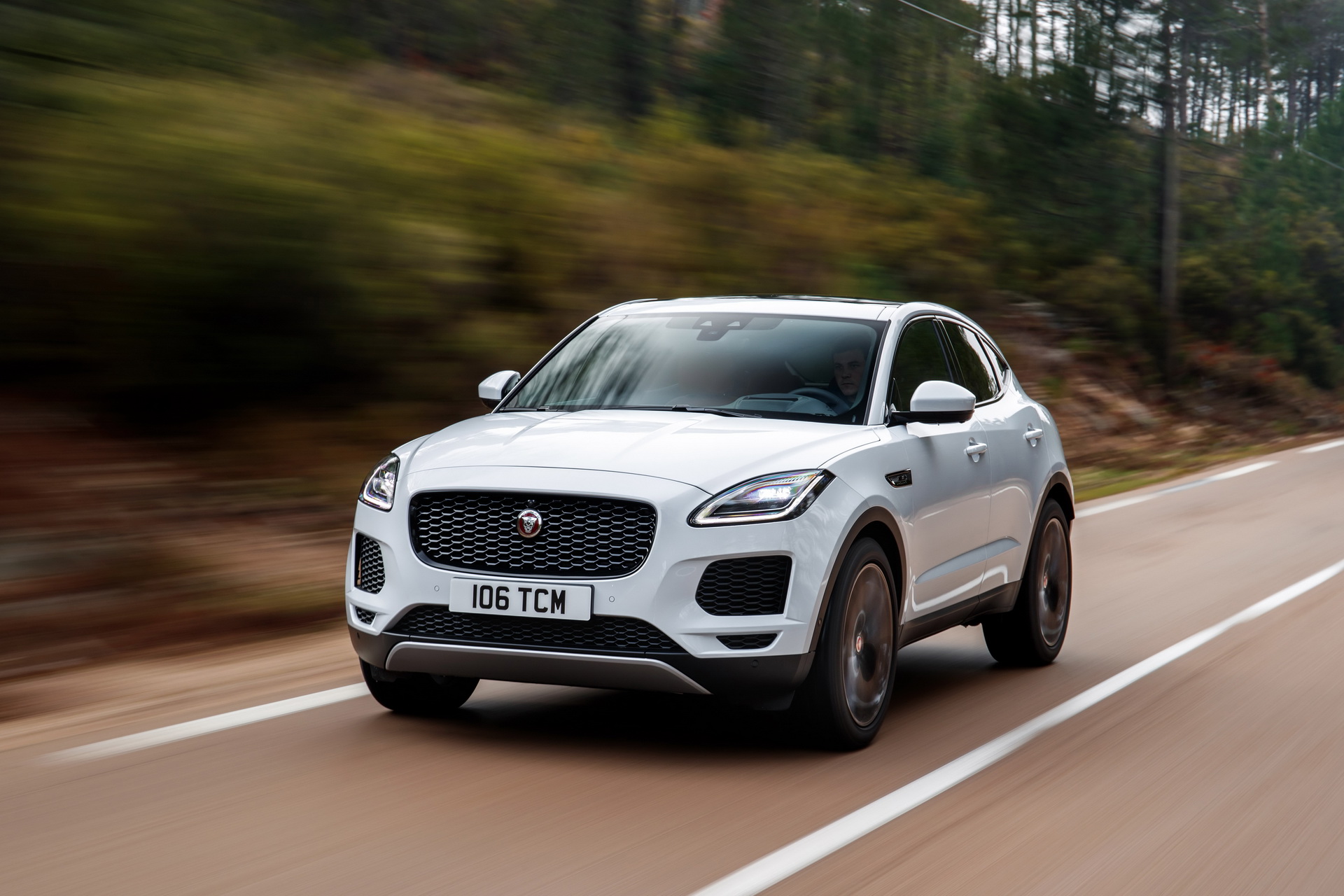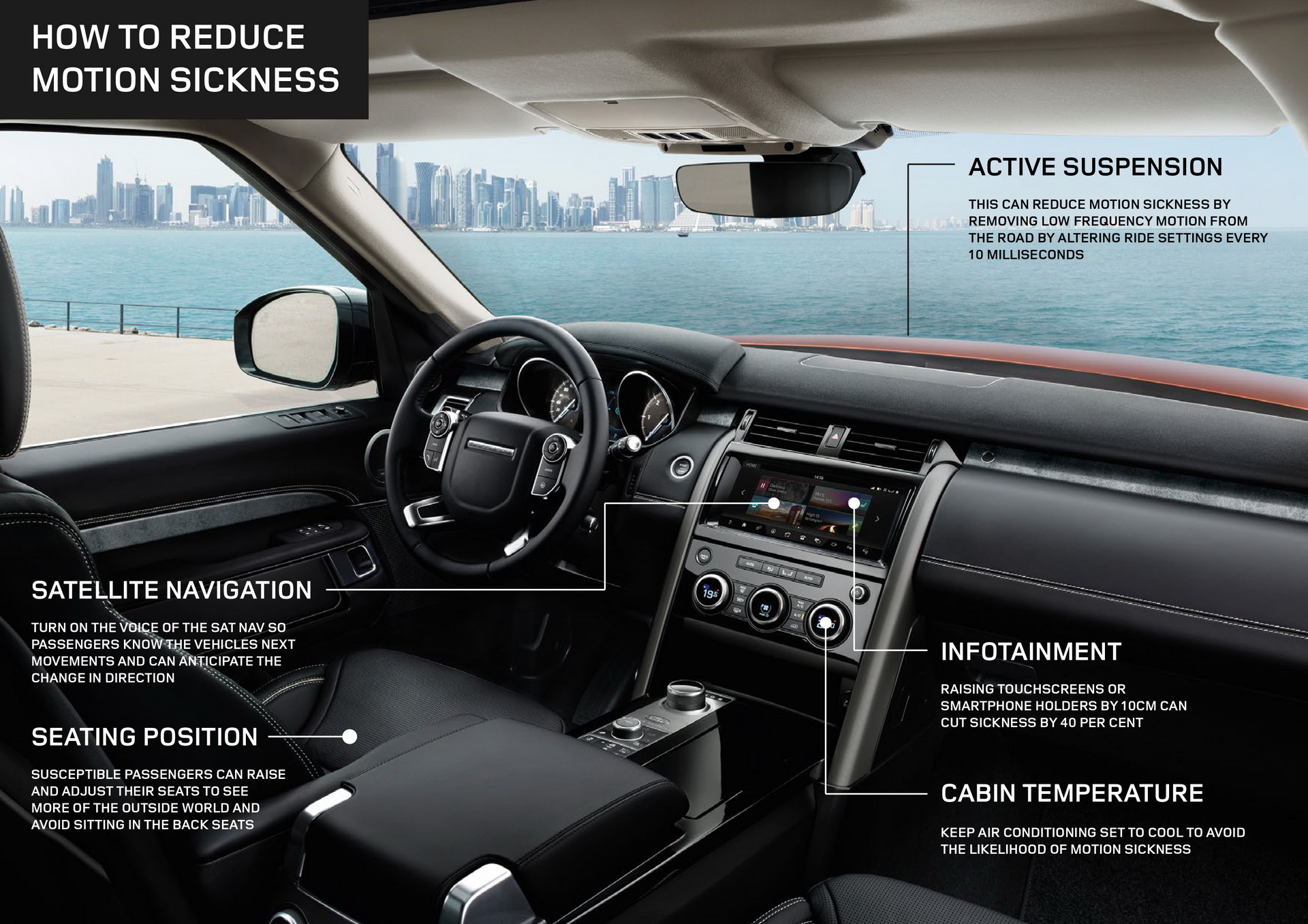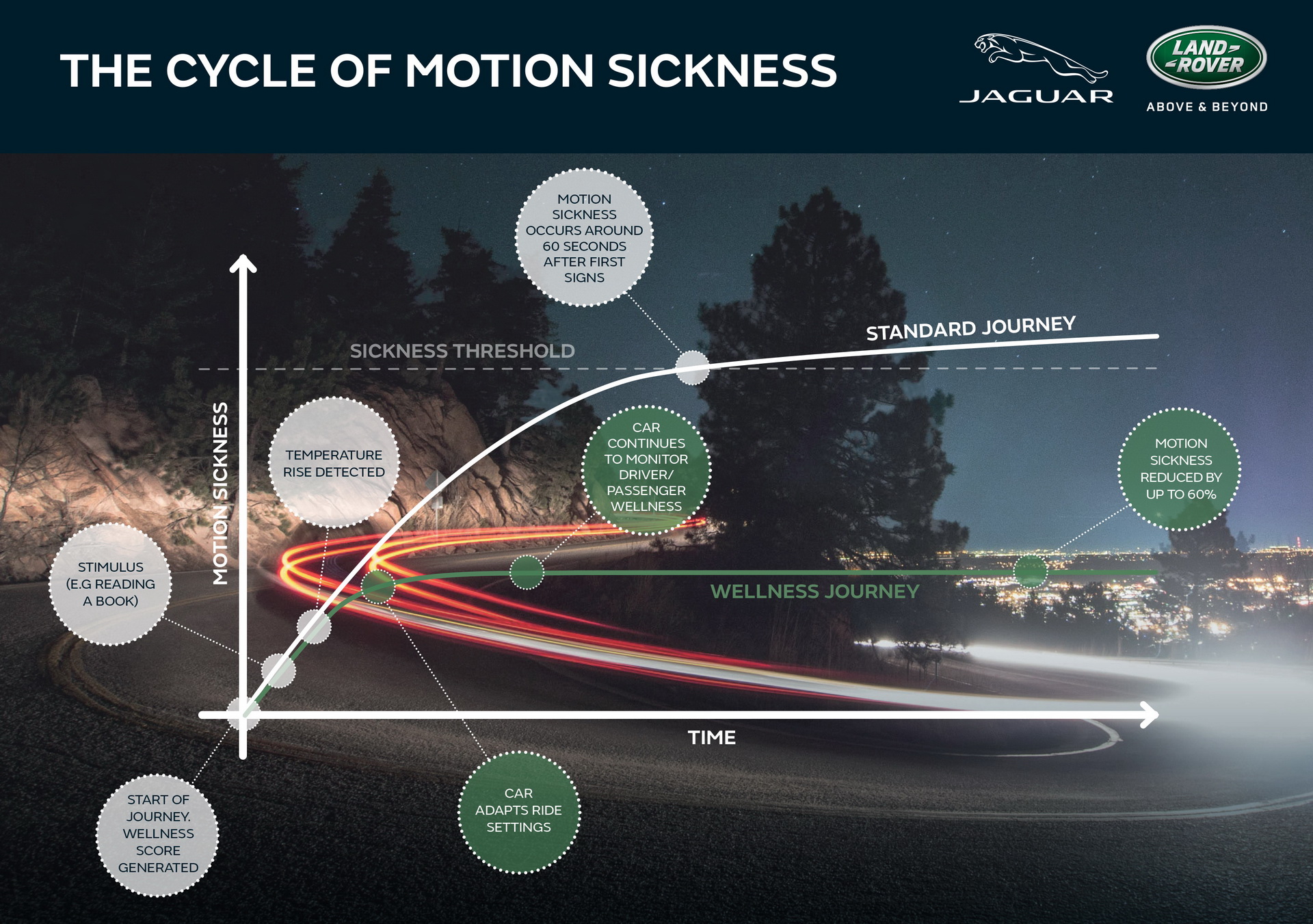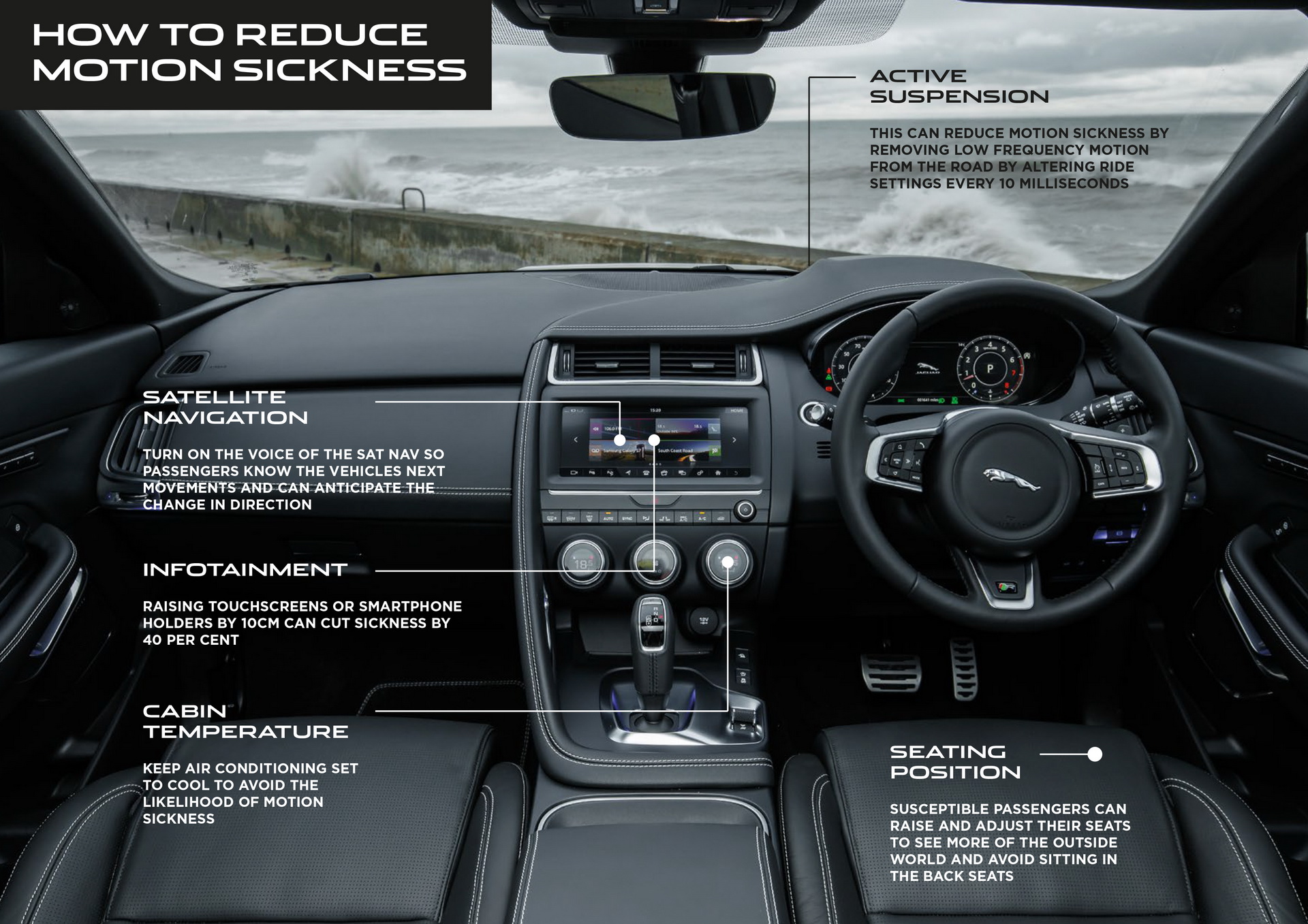The Jaguar Land Rover car of the future will be able to tell if its driver or passengers are feeling unwell and adjust various settings in order to combat motion sickness, which usually occurs when the eyes observe information that is different from what is sensed by the inner ear, skin or body forces.
Motion sickness affects over 70% of people and until recently, “little has been known about the causes and how to mitigate them.”
Now however, by conducting what it calls industry-leading motion sickness research, JLR has created an algorithm that generates a ‘wellness score’ for each passenger. Ultimately, this can be used to automatically personalize a vehicle’s driving and cabin settings, reducing the effects of being car sick by up to 60%.
The automaker has already collected 15,000 miles (24,000 km) worth of motion sickness data and has tested the effects caused by performing tasks while in motion, such as checking e-mails. This has led to the creation of a baseline autonomous driving style, where vehicles will employ fewer steering corrections.
“As we move towards an autonomous future where occupants will have more time to either work, read or relax on longer journeys, it’s important we develop vehicles that can adapt to reduce the effects of motion sickness in a way that’s tailored to each passenger,” stated JLR wellness technology researcher, Spencer Salter.
The previously-mentioned ‘wellness score’ calculates how susceptible people are to feeling car sick, using biometric sensors that record physiological signals – letting the car know when a driver or passenger is becoming motion sick before they do.
“This cutting-edge research has created a solution that, with its solid scientific foundation, can make travelling enjoyable, regardless of your susceptibility to motion sickness. As a parent of young children, who are most susceptible to car sickness, I am particularly excited by the benefits this research can have in making long journeys comfortable and stress-free for families,” explains Dr. Steve Iley, JLR’s chief medical officer.
Even today, there are JLR vehicles, such as the Jaguar E-PACE for example, with features in place that can help combat nausea. The small crossover has 26 different seat configurations for passengers to find a position that brings their eyes more level with the infotainment screen. Then there are the Adaptive Dynamics which are said to remove low frequency motion from the road by altering the ride settings every 10-milliseconds.
JLR’s findings are already being implemented into further projects, ensuring that upcoming models will feature “the ultimate personalized cabin experience.”



